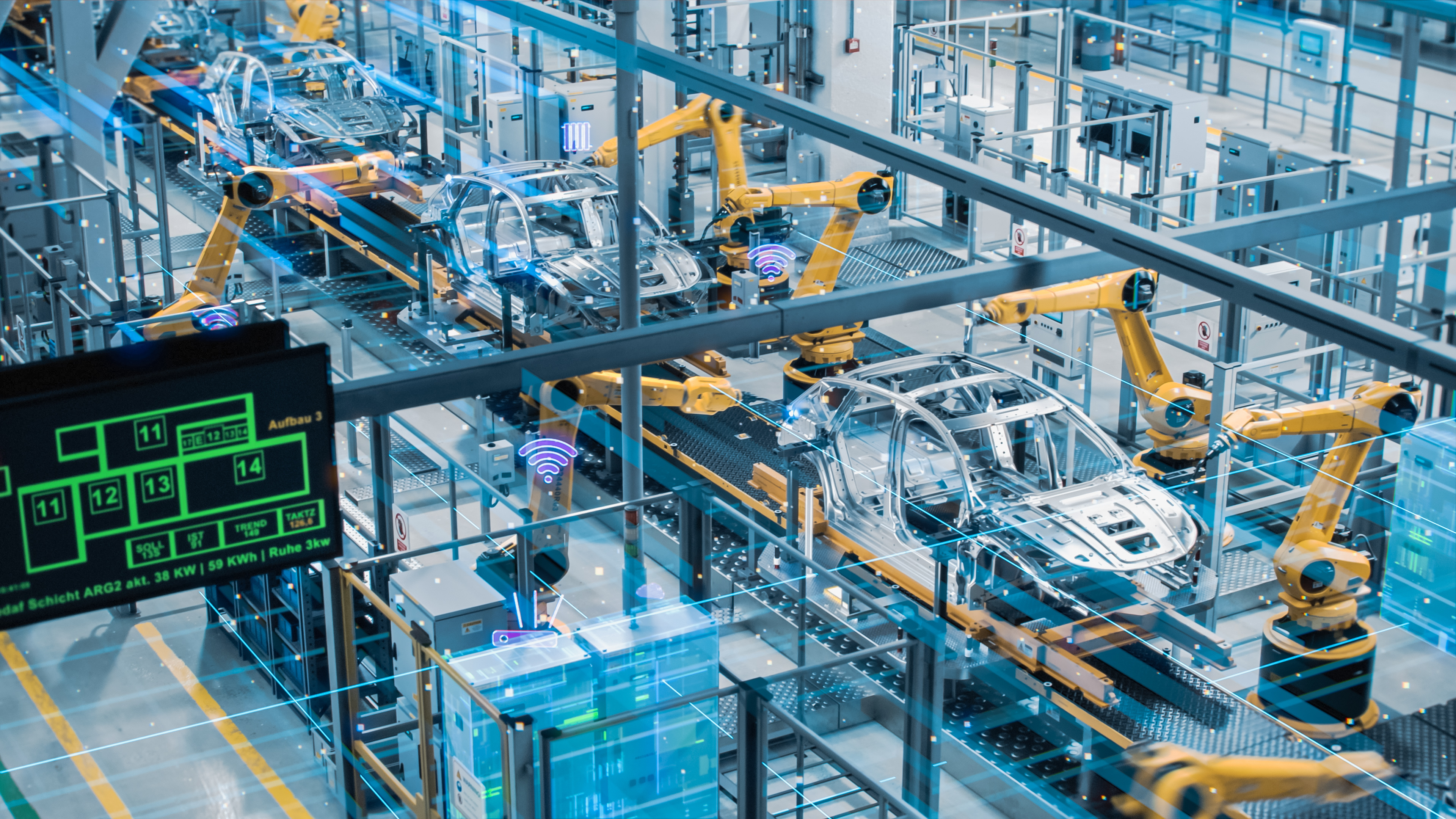Can robots work safely alongside humans? This one industry leader thinks we're not far away
Agility Robotics says its Digit will be able to escape its "work cell" this year


Humanoid robots and people will be able to work truly side-by-side this year, according to the CEO of one leading robotics company.
In a discussion at Mobile World Congress (MWC), Peggy Johnson — who stepped in as CEO of Agility Robotics last year — shared what the company's Digit robot was capable of doing now, and what was expected to be achieved in the near future.
Johnson painted a picture of humans and machines working alongside each other without the need to segregate the machines for safety reasons.
The 1.7m-tall, 85kg-heavy Digit robots can currently lift 16kg in weight, with hopes that will increase to 25kg soon, she said. At the moment, that allows them to take on simple tasks in warehousing and logistics, such as collecting an object and moving it into a tray for another robot to take away.
The advent of generative AI allowed companies like Agility to take robotics that previously required heavy programming to be controlled via simple voice commands.
"We're able to overlay AI onto our traditionally controlled robot, and really supercharge its power," she said.
Human in the loop
But, humanoid robots remain limited. Johnson noted that demos of robots doing backflips or making coffee may catch attention, but that requires intense programming.
Get the ITPro daily newsletter
Sign up today and you will receive a free copy of our Future Focus 2025 report - the leading guidance on AI, cybersecurity and other IT challenges as per 700+ senior executives
With automation alone, the reality of what's possible is much more basic — but still useful. She remarked that warehouses can be heavily automated, but still require a human to pick up parts or products and move them to where they're needed.
"We focused on what is actually possible today, and that is simple tasks, [such as] moving materials," she said, adding: "It's able to do work that's repetitive, can be somewhat dull, tasks that generally people don't like — and in fact there's about a million jobs in this space that are open in the US alone, they can't find people to fill these jobs."
Digit is already used in a warehouse facility in Atlanta, Johnson noted. However, she said that robotics can't take on all aspects of a human worker's role.
"It doesn't complain, doesn't fight with its coworkers," she laughed. "It just does the job.”
"It's augmenting somebody, who that was part of their job — for a few hours a day, they've got to move this product, and then they're over here doing something else," she said. Adding it "augments the human in the loop."
Imperfect AI
Notably, Johnson admitted that limitations in AI mean robots still need human colleagues to keep them on track. Johnson demonstrated a Digit robot on stage, telling it verbally via an iPad to pick up an item — a yellow sponge — and place it into a bin.
Slowly, the robot considered the command, before meticulously moving the item.
Even such a simple display could go wrong, she admitted: "It's why you don't want AI to completely control a robot right now."
However, such tasks were previously onerous to achieve, as they required detailed programming — and it's easier to just pick up the sponge yourself at that point. AI controls help avoid that burden, though building a workflow still takes time.
"You can give a command to a machine and it can act upon it," she said. "That's going to change everything."
The demonstration was powered by Google's Gemini 2 model, though Johnson said Agility supported the use of all AI models in its robotics.
"All the models operate slightly differently, and they're all right now building their robotics foundation models, which is why we became agnostic," she explained.
"We just wanted to swap in whichever one is working best for whatever use case."
Safety first
That said, there's much work that needs to be done, Johnson said, before these robots are capable of everything Agility's customers would like them to do.
Indeed, she said customers have said they'd like to be able to send a Digit down to the loading dock to pick up a box and bring it back to a workstation.
Beyond technology challenges, that would mean Digit has to move alongside humans. Right now, robotics must stay inside what's known as a "work cell", a defined space that humans don't enter for their own safety.
"Right now there are no humanoid robots who are certified to operate outside of a protected area," Johnson said, pinning the blame on the technology itself as well as regulators. "The big unlock [of potential for humanoid robots] is coming out of the work cell and being what's called 'cooperatively safe' around humans."
That would mean a Digit would be able to safely walk down to the loading bay, staying a safe distance from humans even if they did something unexpected.
Johnson said Agility would demonstrate robots operating outside of a work cell later this year. She said: "Agility has solved for that. It's a very challenging product problem."
MORE FROM ITPRO
- ‘Not if, but when’: Where are the autonomous robots?
- How can generative AI help my business?
- What do security pros want from generative AI?
Freelance journalist Nicole Kobie first started writing for ITPro in 2007, with bylines in New Scientist, Wired, PC Pro and many more.
Nicole the author of a book about the history of technology, The Long History of the Future.
-
 M&S suspends online sales as 'cyber incident' continues
M&S suspends online sales as 'cyber incident' continuesNews Marks & Spencer (M&S) has informed customers that all online and app sales have been suspended as the high street retailer battles a ‘cyber incident’.
By Ross Kelly
-
 Manners cost nothing, unless you’re using ChatGPT
Manners cost nothing, unless you’re using ChatGPTOpinion Polite users are costing OpenAI millions of dollars each year – but Ps and Qs are a small dent in what ChatGPT could cost the planet
By Ross Kelly
-
 ‘DIY’ agent platforms are big tech’s latest gambit to drive AI adoption
‘DIY’ agent platforms are big tech’s latest gambit to drive AI adoptionAnalysis The rise of 'DIY' agentic AI development platforms could enable big tech providers to drive AI adoption rates.
By George Fitzmaurice
-
 Application enablement in an AI world
Application enablement in an AI worldHow enterprises can tap into AI-fueled application enablement to build apps faster and deploy them while consuming fewer resources
By Keumars Afifi-Sabet
-
 What is AI-native cloud and what does it mean for business?
What is AI-native cloud and what does it mean for business?Supported Content Merging two important fields, AI-native cloud is a framework that will only become more popular as businesses ramp up the adoption of AI tools
By George Fitzmaurice
-
 How to build an intelligent foundation for the retail sector
How to build an intelligent foundation for the retail sectorSupported Content As the retail sector grapples with unprecedented challenges, industrial digital intelligence has become crucial to underpin survival and growth successfully
By Rene Millman
-
 How is the public sector harnessing AI for good?
How is the public sector harnessing AI for good?Supported Content From hospital wait time reductions to automating admin processes, AI is being used to create an intelligent foundation that powers digital transformation and delivers real value for staff and customers alike
By George Fitzmaurice
-
 How to build an intelligent foundation for the manufacturing sector
How to build an intelligent foundation for the manufacturing sectorSupported Content Manufacturing's future hinges on harnessing the power of industrial digital intelligence, with solid foundations integrating AI, automation and the IoT to overcome challenges.
By Rene Millman
-
 How AI and digital transformation are game changers for the finance industry
How AI and digital transformation are game changers for the finance industrySupported Content Advances in generative AI technology are enabling financial services institutions to unlock marked efficiency benefits
By Ross Kelly
-
 How is AI improving healthcare?
How is AI improving healthcare?Supported Content From disease imaging technology to administrative tools, AI is playing an important role in aiding a strained industry
By George Fitzmaurice